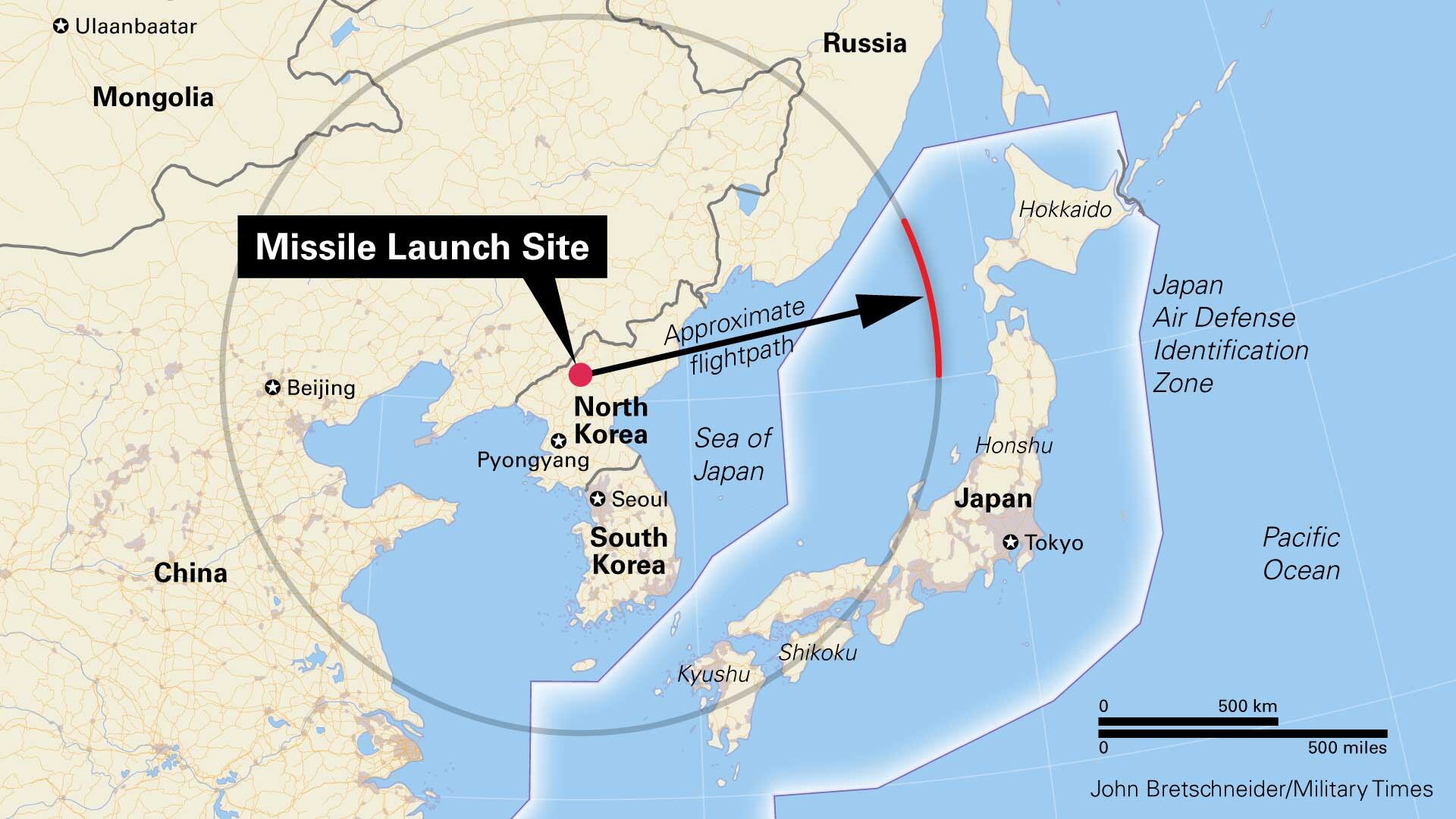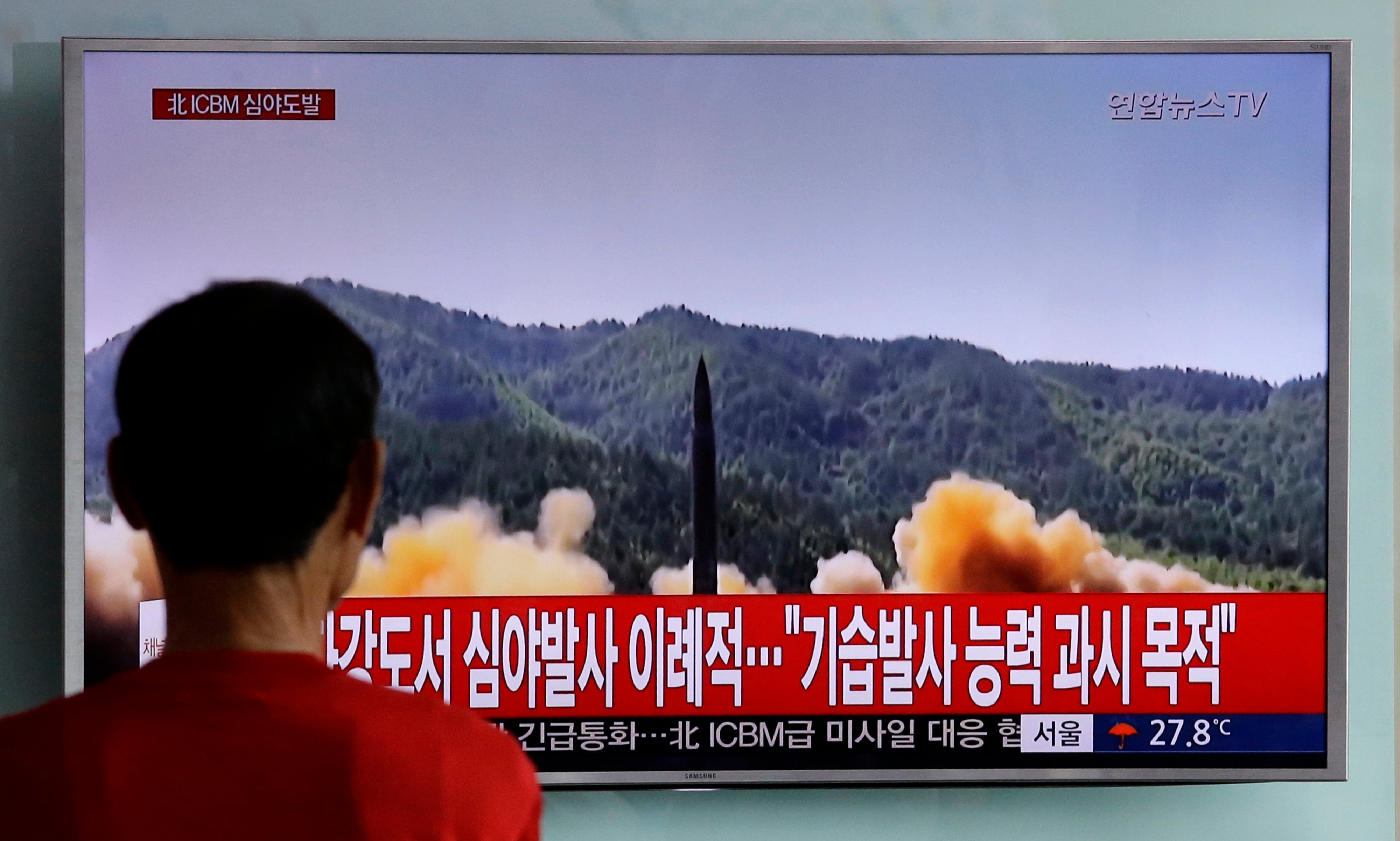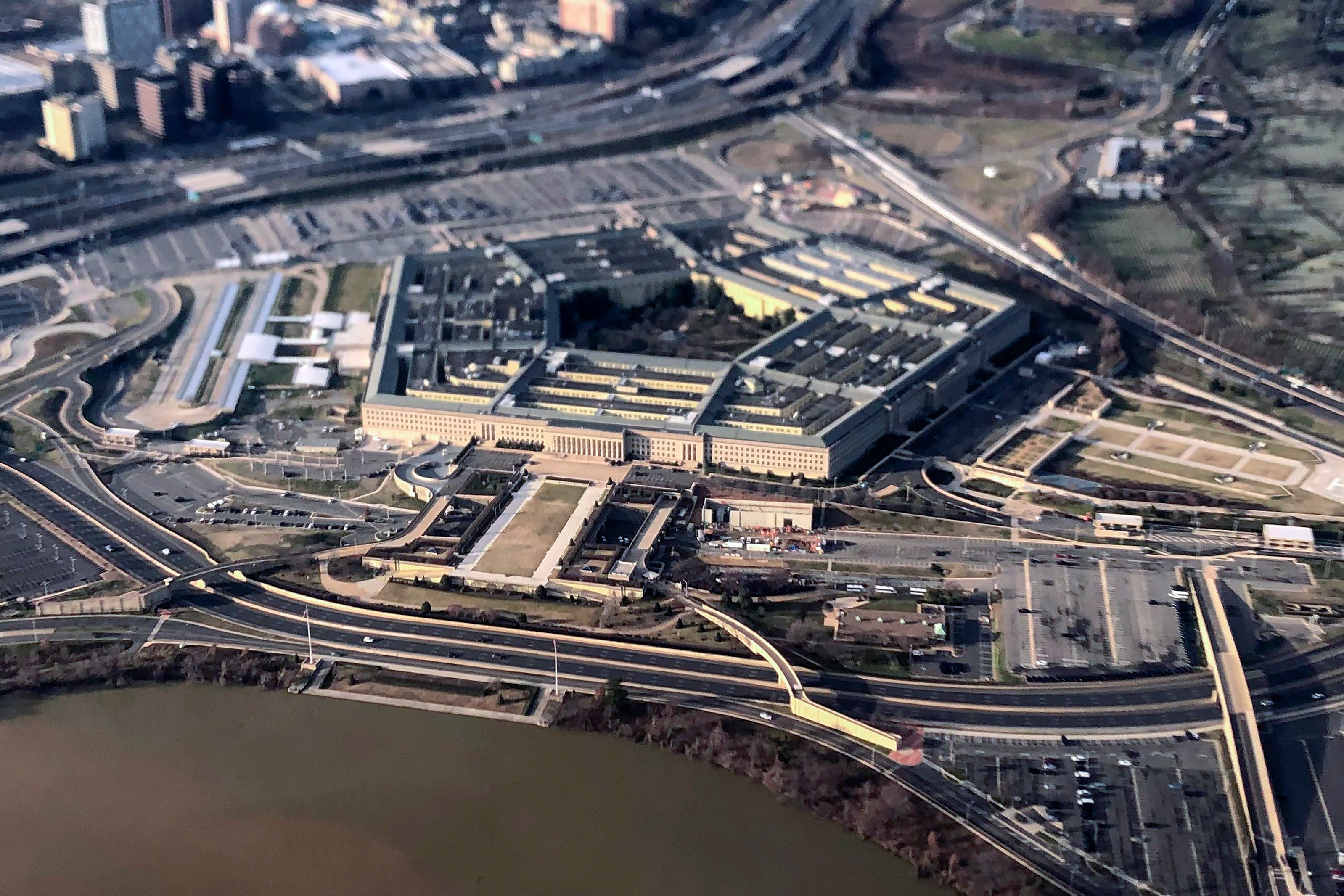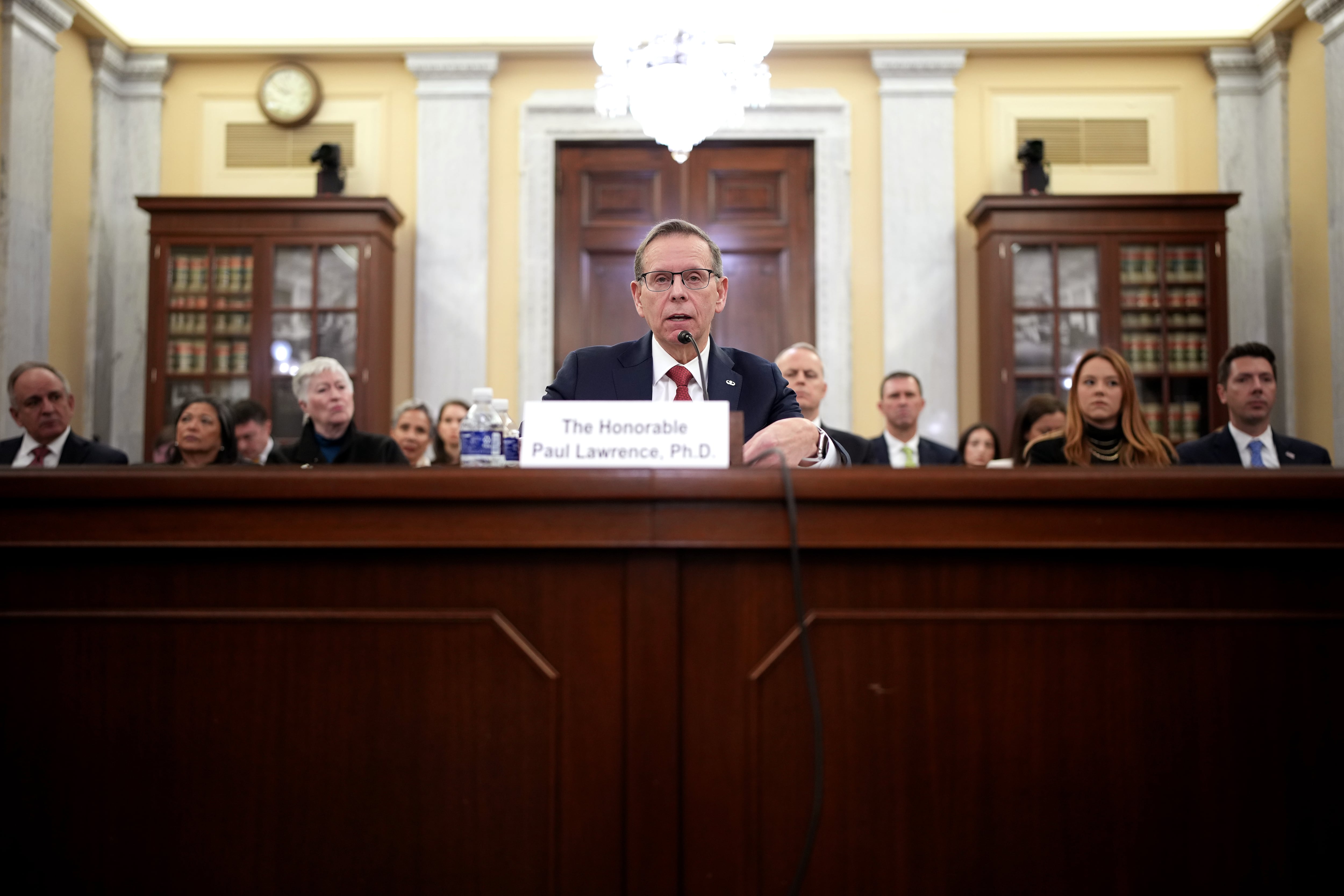The specter of war loomed over the Korean Peninsula Friday as the U.S. Army and its South Korean allies fired a barrage of large missiles into the waters off the South Korean coastline, an “exercise” intended to be a warning and a direct response to North Korea’s test of an effective intercontinental ballistic missile earlier Friday morning.
The Army fired 13-foot-long missiles from the Army Tactical Missile System, or ATACMS, a long-range surface-to-surface precision-strike weapon system, into South Korea’s territorial waters. according to a statement from the Korea-based U.S. 8th Army
The test came just hours after North Korea’s test of an ICBM which analysts said for the first time displayed the capability to exceed 10,000 km in range, a distance capable of potentially threatening New York or San Diego.
Following the launch Friday morning, Chairman of the Joint Chiefs of Staff, General Joe Dunford, and Commander, U.S. Pacific Command, Adm. Harry Harris called the Republic of Korea Joint Chiefs of Staff Chairman, Gen. Lee Sun-jin, according to the Pentagon.
“During the call Dunford and Harris expressed the ironclad commitment to the U.S.-Republic of Korea alliance,” a Pentagon release stated. ”The three leaders also discussed military response options.” Harris joined Dunford in his Pentagon office to make the phone call.
The ATACMS missile launch was a “combined training event to exercise assets countering North Korea’s missile launch/nuclear test,” the Army statement said.
Pentagon spokesman Navy Capt. Jeff Davis issued an statement on the launch from the Defense Department.
“The U.S. Department of Defense detected and tracked a single North Korea missile launch today at about 10:41 a.m. [Eastern Daylight Time],” said Davis, reading the official statement. “We assess that this missile was an intercontinental ballistic missile, as had been expected.”
Davis said the missile was launched from Mupyong-ni, and said it traveled “about 1,000 kilometers before splashing down in the Sea of Japan.”

Mupyong-ni “is an arms plant up in the far north of North Korea, north of Pyongyang,” Davis said. The missile “splashed down inside Japan’s exclusive economic zone, about 88 nautical miles from Hokkaido,” Davis told reporters at the Pentagon.
“We’re working with our interagency partners for a more detailed assessment,” he said.
North American Aerospace Defense Command assessed the launch and “determined it was not a threat to North America,” Davis said.
Jeffrey Lewis, director of the East Asia Nonproliferation Program at the James Martin Center for Nonproliferation Studies, told Defense News that the decision to do a night launch from a new location “demonstrates that we can’t preempt them” from future launches.
[What war with North Korea would look like]
Most worryingly, Lewis noted the reported 45-minute flight time of the missile and other data, which would “be consistent” with longer-range estimates of the weapon’s capabilities — perhaps putting its range in the 10,000 km range — distance enough to put continental U.S. locations at risk.
“Preliminary reports [are] consistent with computer models showing that the missile can hit targets in CONUS,” he said.
David Wright, co-director of the Union of Concerned Scientists’ Global Security Program, wrote on his website that the launch characteristics show that a number of major U.S. cities may now be in range.
“Los Angeles, Denver, Chicago appear to be well within range of this missile, [and] Boston and New York may be just within range,” Wright wrote. “Washington DC may be just out of range.”
However, Wright stressed that “it is important to keep in mind that we do not know what payload the missile carried on this test. If it was lighter than the actual warhead the missile would carry, the ranges would be shorter than those estimated above.”
Joshua Pollack, a non-proliferation expert with the Middlebury Institute of International Studies at Monterey, California, was less confident that the 45-minute flight time guarantees a 10,000 km range, but noted that if that range is in play, North Korea would be able to hold naval hub San Diego as a target.
The city appeared highlighted as a potential target on a map that appeared in the background of a 2013 North Korea propaganda film a North Korea.
Pollack added that the launch profile raises the possibility that North Korea has tested an ICBM Ballistic Missile Operating Area, a region of the country where mobile launch platforms would be able to move around freely and securely.
“The word of the day is ‘ICBM BMOA,’” he told Defense News.
A July 4 launch, which Pentagon officials said involved an ICBM-class missile, occurred at an aircraft plant area known as Panghyon. North Korea used a mobile platform to launch that weapon for the first time, Davis said July 5.
In response to that launch, the U.S. and South Korea issued a show of force by firing weapons from a pair of Army Tactical Missile System batteries, controlled by the U.S. Eighth Army.
The Pentagon had been conducting surveillance of North Korea’s known launch sites in the last week and had said previously it had seen evidence North Korea was preparing for another launch.
Two U.S. Navy ships — the destroyer Momsen and the radar ship Howard O. Lorenzen —were still in the area at the time of Friday’s launch, a defense official said on the condition of anonymity, but it was not yet clear if those vessels were able to track the missile.
The ships tracked North Korea’s July 4 launch.
Friday’s missile did enter space, Davis said, which led to the conclusion it was an ICBM. An ICBM is defined as a missile that can travel farther than 5,500 km.
“It was another high loft,” he said.
Tara Copp is a Pentagon correspondent for the Associated Press. She was previously Pentagon bureau chief for Sightline Media Group.
Aaron Mehta was deputy editor and senior Pentagon correspondent for Defense News, covering policy, strategy and acquisition at the highest levels of the Defense Department and its international partners.
Andrew Tilghman is the executive editor for Military Times. He is a former Military Times Pentagon reporter and served as a Middle East correspondent for the Stars and Stripes. Before covering the military, he worked as a reporter for the Houston Chronicle in Texas, the Albany Times Union in New York and The Associated Press in Milwaukee.





